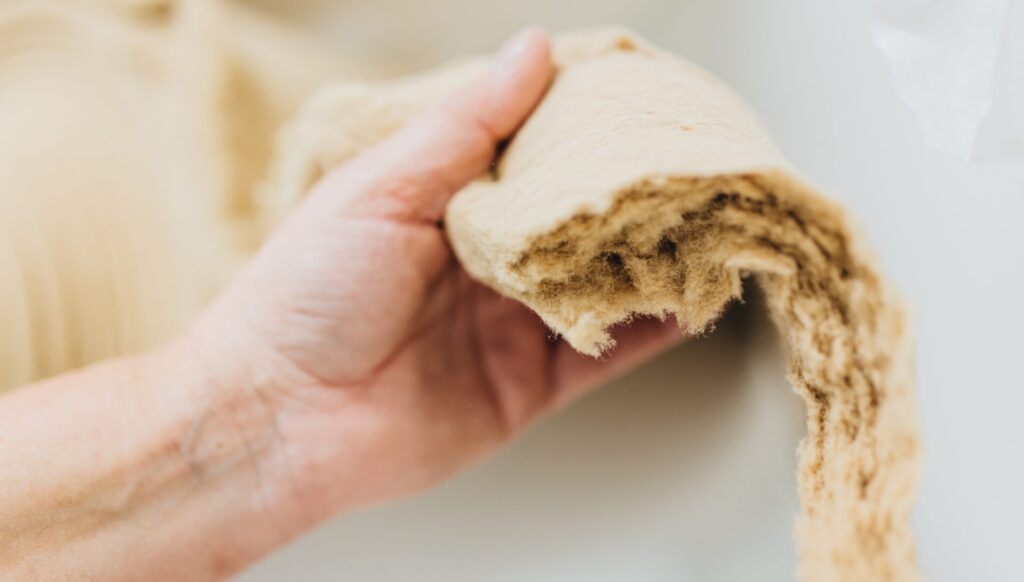& Construction

Integrated BIM tools, including Revit, AutoCAD, and Civil 3D
& Manufacturing

Professional CAD/CAM tools built on Inventor and AutoCAD
7 min read
See how Autodesk’s Product Design & Manufacturing collection supports PulPac’s Dry Molded Fiber technology on its mission to replace more than one million tons of plastic by 2025.

Founded in 2018, PulPac is on a mission to replace single-use plastics globally with its ground-breaking manufacturing technology for low-cost, high-performance fiber-based packaging and single-use products. By pioneering the technology of dry fiber molding, PulPac’s customers can replace single-use plastics with a sustainable and cost-competitive alternative. The company has seen rapid growth year-on-year, expanding its team from 30 to 65 in the past 12 months. The company wanted to expand its digital capabilities through Autodesk’s Product Design & Manufacturing (PDMC) Collection and Fusion 360 to power further innovation and access higher-value projects.
“Single-use plastics are overengineered. They don’t break down. A coffee cup will last three hundred years when it’s needed for five minutes, so every day, we are adding millions of these cups into the system.”
Viktor Börjesson, Chief Partnership Officer at PulPac
From coffee lids littering high street pavements to bottles bobbing in the ocean, the visible signs of the planet’s single-use plastic obsession are everywhere. Plastic pollution is a big problem, but the actual impact on global warming is less talked about. The world is producing twice as much plastic waste as two decades ago, with the bulk of it ending up in landfill, incinerated, or leaking into the environment. Only 9% of it is successfully recycled, with 22% mismanaged, according to an Organization for Economic Co-operation and Development (OECD) report.
In 2019, the Center for International Environmental Law (CIEL) estimated that the production and incineration of plastic would add 850 million metric tons of greenhouse gases to the atmosphere – equivalent to 189 coal-fired power plants. By 2050 this could rise to 2.8 gigatons of carbon dioxide per year – or 615 coal plants’ worth. The problem is clear, but solutions to overcome the planet’s addiction to single-use plastics are falling short.
Circularity efforts are not working, so instead, PulPac is on a mission to replace more than one million tons of plastics by 2025. This is 1% of the annual packaging production. PulPac’s impact vision also aims to save up to five million tons in CO2 equivalents, which is equal to the annual emission from the Swedish steel industry. Through its dry-molded fiber technology, PulPac is also aiming to save up to one billion liters of water, which is enough to provide water to up to 135,000 people for a year (WHO).

Dry Molded Fiber (DMF) is the first dry industrial method that can convert cellulose fibers into packaging. Some countries are legislating the removal of single-use plastics but relying on legislation is not going to solve the problem quickly enough. Organizations still need a product that is of the same level of quality and is competitive in price to replace single-use plastics at scale.
PulPac’s Dry Molded Fiber technology delivers true innovation, affordability, flexibility, throughput speed, and a high-quality outcome. A PulPac production line can match the throughput speed of commodity plastics processing, enabling converters to shift from producing plastic products to high-performance sustainable fiber-based products. Conventional pulp converters can increase margins as the Dry Molded Fiber technology has cost, speed, quality, and design advantages that are out of reach for traditional fiber molding methods.
In terms of quality, the materials used in Dry Molded Fiber manufacturing are readily available resources, typically pulp from wood purchased on the open market. Depending on the application, residue or recycled cellulose fibers can be used. The pulp can be treated to add additional properties, such as water or grease resistance, and to increase strength. Design flexibility is high, and there is the possibility to produce complex designs.
From straightforward design applications such as cutlery, plates, and bowls to more complex shapes, such as bottles, PulPac is engineering the product for its specific purpose, such as usage time. PulPac wanted to collaborate with a partner that could help them with the engineering process of developing these products. With the help of Autodesk’s PDMC collection and Fusion 360, they are driving innovation in the application possibilities for Dry Molded Fiber manufacturing technology.

To achieve its sustainability impact vision, PulPac licenses its Dry Molded Fiber technology at scale, increasing speed to market whilst remaining cost-effective against traditional plastic manufacturing. One of the problems of traditional plastic manufacturing is that it is over-engineered. Viktor Börjesson, Chief Partnerships Officer at PulPac said: “Single-use plastics are over-engineered. They don’t break down. A coffee cup will last three hundred years when it’s needed for five minutes, so every day, we are adding millions of these cups into the system.”
PulPac builds custom solutions to help customers solve new processing challenges. To do this, its engineers rely on Autodesk’s PDMC collection, including Autodesk Inventor, Autodesk Vault, and Fusion 360.
According to Mathias Bergfjord, R&D Engineer at PulPac: “I’ve worked with various CAD software for 15 years, and at PulPac, Autodesk’s PDMC collection has enabled us to further expand and diversify our services. It is a powerful package of applications that supports our engineers who are designing complex and custom products across various industries. Through one package, we create configurable models for our teams, who can view and manage entire projects in one place. This makes their workflow easier; the tools are very intuitive, and these models save them a great deal of time because they don’t have to repetitively create models from scratch every time.”

Limitations of Dry Molded Fiber manufacturing are few, but PulPac is looking to drive growth with converters looking to ditch single-use plastics. To reach its impact vision, PulPac is looking to expand the products that its technology can help manufacture. With Fusion 360 and its cloud-based 3D modeling, CAD, and CAM software for professional product design and manufacturing, engineers are able to show new clients how they can design and engineer products in terms of aesthetics, form, fit, and function. Product performance is vital, and convertors to Dry Molded Fiber products discover innovative designs that reduce product cost and weight.
A focus on sustainability throughout design and manufacturing processes helps PulPac realize a host of positive outcomes, including energy and material cost savings, faster product design, and more durable and resilient products. Manufacturing’s extensive impact on carbon emissions means it is going to be at the forefront of change —whether it’s self-regulated or mandated by governments.

Implementing design automation gives engineers and designers more time to think about new product development and innovation. This will lead to further innovation and more sustainable options. “We’ve seen our internal team create models in days instead of weeks,” Bergfjord says. “Our internal team can automate their CNC machining workflows to reduce programming time, remove repetitive tasks, and model enhancement features to reduce errors. According to Börjesson: “Autodesk has enabled us to make our internal processes more efficient.”
“Through one package, we create configurable models for our teams, who can view and manage entire projects in one place. This makes their workflow easier; the tools are very intuitive, and these models save them a great deal of time because they don’t have to repetitively create models from scratch every time.”
Mathias Bergfjord, R&D Engineer at PulPac
As part of its high-paced growth strategy, PulPac has been on a recruitment drive to grow the talent and skills they have in-house. Over doubling in size in the past 12 months, Autodesk’s PDMC collection has been an attractive part of the recruitment process, with talented engineers opting to work with the tools. Börjesson noted: “All of our engineers share our sustainability values and vision to replace more than one million tons of plastics by 2025. Many of these professionals have experience using Autodesk’s software, and we’ve found that many are keen to work with it again in their new roles here. We’ve also found that those who haven’t used Autodesk tools have found the transition easy.”
PulPac is targeting its 2025 vision through high-growth strategies and diversifying its technology offering into new markets. The company is actively looking into new ways of improving its internal workstreams to further innovate and develop its technology. Concluding, Börjesson said, “Autodesk has improved the way we approach our projects and is boosting our speed to market, which is a key performance metric. From time and cost savings to improved quality, and innovation, we are excited to continue our work with Autodesk to meet our short- and long-term sustainability goals.”
By clicking subscribe, I agree to receive the Fusion newsletter and acknowledge the Autodesk Privacy Statement.
Success!
May we collect and use your data?
Learn more about the Third Party Services we use and our Privacy Statement.May we collect and use your data to tailor your experience?
Explore the benefits of a customized experience by managing your privacy settings for this site or visit our Privacy Statement to learn more about your options.